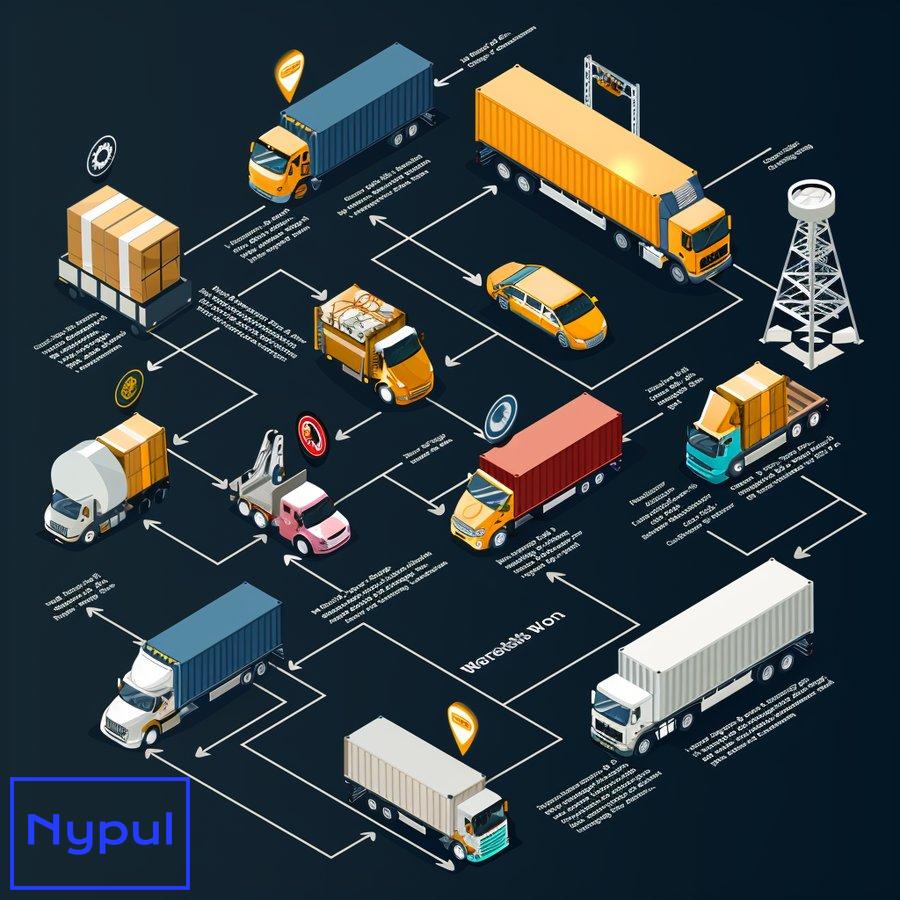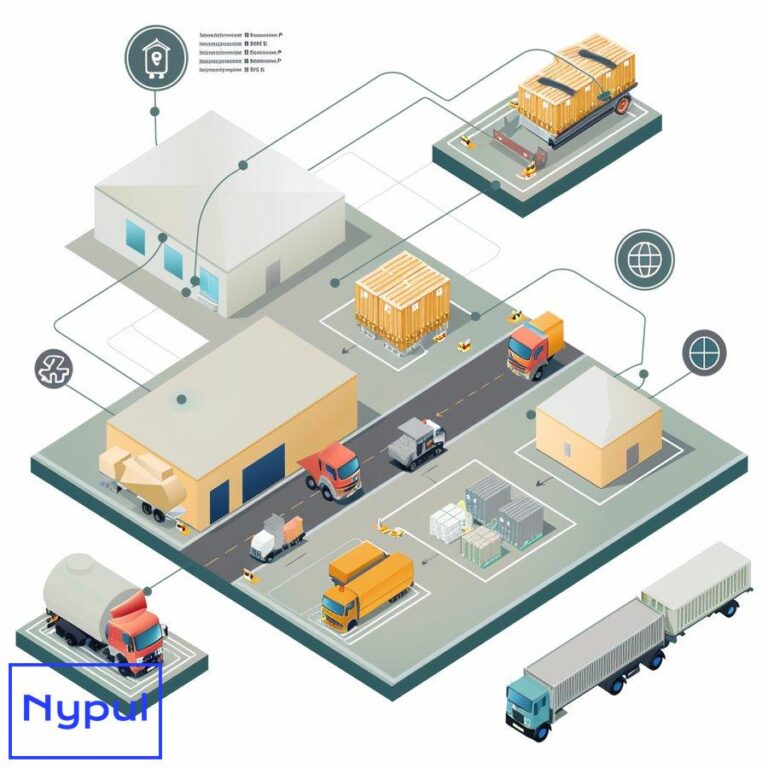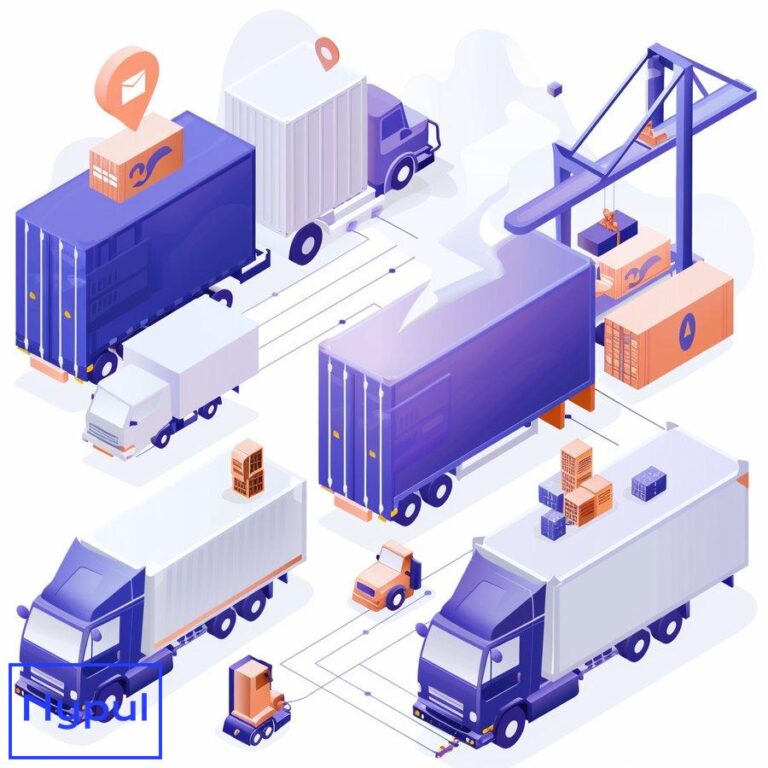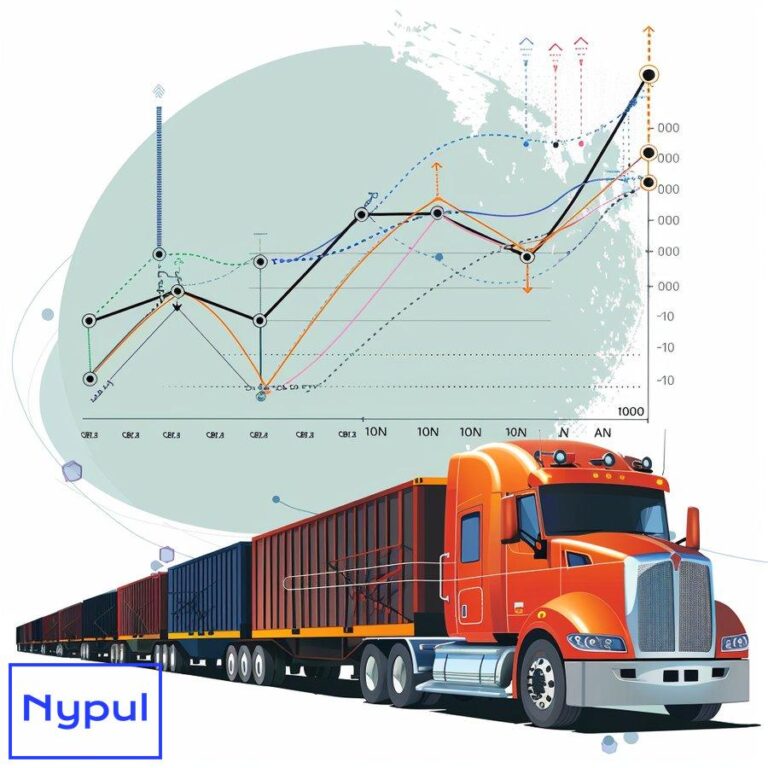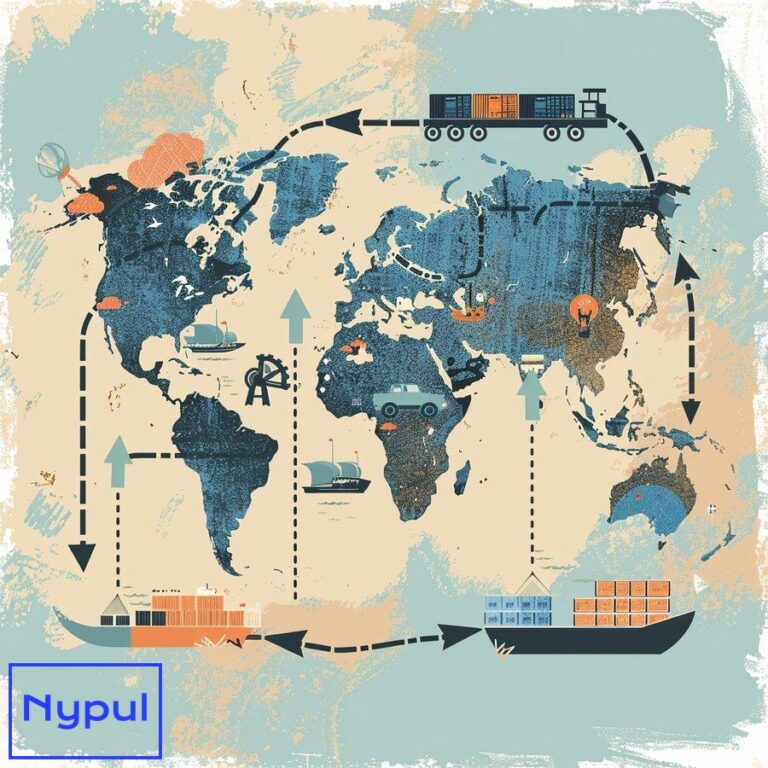What Is a Drayage Provider
Drayage providers are specialized logistics companies that transport shipping containers over short distances, typically between ports, rail yards, and nearby warehouses or distribution centers. These companies play a critical role in the intermodal transportation system by bridging the gap between long-distance shipping methods and local delivery networks.
A drayage provider’s primary function is to move cargo containers from one transportation mode to another efficiently. For example, they may pick up a container from a seaport and deliver it to a rail terminal, or transport containers from a rail yard to a nearby warehouse. This short-haul transportation is essential for keeping goods flowing smoothly through the supply chain.
Key characteristics of drayage providers include:
Specialized equipment: Drayage companies operate trucks specifically designed to handle shipping containers, including chassis for various container sizes.
Local expertise: These providers have in-depth knowledge of local ports, terminals, and transportation routes, allowing them to navigate complex logistics environments efficiently.
Flexibility: Drayage providers often offer flexible scheduling to accommodate the dynamic nature of port and rail operations.
Regulatory compliance: They must adhere to strict regulations governing port and terminal operations, as well as transportation safety standards.
Technology integration: Many modern drayage providers utilize advanced tracking and management systems to optimize their operations and provide real-time visibility to clients.
To better understand the role of drayage providers, consider the following comparison between drayage and long-haul trucking:
| Aspect | Drayage | Long-Haul Trucking |
|---|---|---|
| Distance | Short distances (typically < 100 miles) | Long distances (often hundreds or thousands of miles) |
| Duration | Usually completed within a single shift | Can take multiple days |
| Equipment | Specialized for container handling | Various trailer types for different cargo |
| Focus | Intermodal connections | Point-to-point delivery |
| Scheduling | Often requires flexible timing | Generally follows set schedules |
| Local knowledge | Critical for efficient operations | Less crucial for highway transport |
Drayage providers serve as a vital link in the global supply chain, enabling the seamless transition of goods between different transportation modes. Their specialized services ensure that cargo moves efficiently from ports and rail yards to its next destination, playing a crucial role in the overall logistics process.
Why are drayage providers crucial in logistics?
Drayage providers play an indispensable role in the logistics industry, serving as the connective tissue between various modes of transportation. Their importance stems from several key factors that directly impact the efficiency and effectiveness of global supply chains.
Intermodal connectivity: Drayage providers bridge the gap between long-distance transportation methods (such as ocean shipping and rail) and local distribution networks. This connectivity is essential for the smooth flow of goods from global origins to final destinations.
Port congestion mitigation: By efficiently moving containers out of port areas, drayage providers help reduce congestion at busy seaports. This is crucial for maintaining the overall throughput capacity of port facilities and preventing costly bottlenecks in the supply chain.
Time-sensitive operations: Many industries rely on just-in-time inventory systems, which require precise timing in the movement of goods. Drayage providers excel at handling these time-sensitive shipments, ensuring that cargo reaches its next destination promptly.
Cost optimization: Short-haul transportation by drayage providers is often more cost-effective than using long-haul trucking services for the initial or final leg of a shipment. This cost efficiency contributes to overall savings in logistics operations.
Flexibility and responsiveness: Drayage companies can quickly adapt to changes in shipping schedules, port conditions, and customer requirements. This flexibility is crucial in managing the dynamic nature of global trade.
Specialized handling: Certain types of cargo require special handling or equipment during the short-haul phase of transportation. Drayage providers offer the expertise and specialized equipment necessary for these unique shipments.
Customs and regulatory compliance: Drayage providers often assist in navigating the complex regulatory environment surrounding international trade, helping to ensure compliance with customs regulations and other legal requirements.
The impact of drayage providers on supply chain efficiency can be quantified through various metrics:
| Metric | Impact of Efficient Drayage |
|---|---|
| Port dwell time | Reduced by up to 30% |
| Transportation costs | Lowered by 10-15% for intermodal shipments |
| On-time delivery rates | Improved by 20-25% |
| Inventory carrying costs | Decreased by 5-10% due to faster transit times |
| Carbon emissions | Reduced by 15-20% compared to long-haul trucking for short distances |
These metrics demonstrate the significant positive impact that effective drayage services can have on overall supply chain performance.
The crucial role of drayage providers extends beyond mere transportation. They act as key facilitators in the global logistics ecosystem, enabling the smooth transition of goods between different modes of transport and ensuring that supply chains operate with maximum efficiency. Their specialized services and local expertise make them indispensable partners for businesses engaged in international trade and domestic distribution alike.
What services do drayage providers offer?
Drayage providers offer a comprehensive range of services designed to facilitate the movement of containerized cargo over short distances. These services are tailored to meet the diverse needs of shippers, freight forwarders, and other logistics stakeholders. The primary services offered by drayage providers include:
Port drayage: This involves the transportation of containers from seaports to nearby warehouses, distribution centers, or intermodal facilities. Port drayage is critical for quickly moving imported goods out of congested port areas.
![]()
Rail drayage: Drayage providers transport containers between rail terminals and local destinations. This service is essential for connecting rail freight to final delivery points or other modes of transportation.
Inter-terminal drayage: This service involves moving containers between different terminals within a port or between nearby ports. It’s crucial for optimizing container positioning and managing port operations efficiently.
Expedited drayage: For time-sensitive shipments, drayage providers offer expedited services to ensure rapid movement of containers from ports or rail yards to their next destination.
Transloading: This involves transferring cargo from ocean containers to domestic containers or trailers. Transloading is often used to optimize load configurations for inland transportation.
Container yard services: Many drayage providers operate or partner with container yards, offering short-term storage, container maintenance, and positioning services.
Customs bonded transportation: Drayage companies often provide bonded transportation services for moving goods that have not yet cleared customs to bonded warehouses or examination sites.
Overweight container handling: Specialized equipment and permits are used to transport containers that exceed standard weight limits, ensuring compliance with road regulations.
Refrigerated container drayage: Drayage providers offer specialized services for temperature-controlled containers, maintaining the cold chain for perishable goods.
Hazardous materials handling: Certified drivers and equipment are used for the safe transportation of hazardous materials in compliance with regulatory requirements.
Cross-dock services: Some drayage providers offer cross-docking facilities where goods can be quickly transferred between containers or trailers to optimize load consolidation.
Container chassis provision: Drayage companies often supply and manage the chassis needed for container transportation, simplifying logistics for their clients.
The scope of services offered by drayage providers can be illustrated through the following table, which outlines the typical applications and benefits of each service:
| Service | Application | Key Benefits |
|---|---|---|
| Port drayage | Import/export operations | Reduces port congestion, speeds up cargo availability |
| Rail drayage | Intermodal logistics | Enhances connectivity between rail and local destinations |
| Expedited drayage | Time-sensitive shipments | Minimizes transit time for urgent cargo |
| Transloading | Optimization of inland transport | Improves load efficiency, reduces transportation costs |
| Customs bonded transport | International shipments | Ensures regulatory compliance, facilitates customs processes |
| Refrigerated container drayage | Perishable goods | Maintains product integrity throughout the cold chain |
| Hazardous materials handling | Dangerous goods transport | Ensures safety and regulatory compliance |
These services collectively enable drayage providers to offer comprehensive solutions for the complex logistics needs of modern supply chains. By providing a wide array of specialized services, drayage companies can address the diverse requirements of different industries and cargo types, ensuring efficient and compliant movement of goods in the critical first and last miles of transportation.
How do drayage providers impact supply chain efficiency?

Drayage providers play a pivotal role in enhancing supply chain efficiency through their specialized services and strategic positioning within the logistics network. Their impact on supply chain operations is multifaceted and contributes significantly to the overall performance of global trade systems.
Reduction of port congestion: By swiftly moving containers out of port areas, drayage providers help alleviate congestion at busy seaports. This increased throughput capacity allows for more efficient vessel turnaround times and reduces the risk of supply chain bottlenecks.
Improved inventory management: Efficient drayage operations enable faster movement of goods from ports to distribution centers, allowing businesses to implement more responsive inventory strategies. This can lead to reduced carrying costs and improved cash flow.
Enhanced intermodal connectivity: Drayage providers facilitate seamless transitions between different modes of transportation, optimizing the use of rail, sea, and road networks. This interconnectivity results in more efficient routing and reduced overall transit times.
Cost optimization: By specializing in short-haul transportation, drayage providers offer cost-effective solutions for the critical first and last miles of shipments. This specialization often translates to lower transportation costs compared to using long-haul trucking for these segments.
Increased flexibility: Drayage companies can quickly adapt to changes in shipping schedules and port conditions, providing the agility needed to manage the dynamic nature of global supply chains. This flexibility helps mitigate the impact of disruptions and delays.
Time-sensitive deliveries: For industries relying on just-in-time inventory systems, drayage providers ensure that time-critical shipments reach their destinations promptly, supporting lean manufacturing processes and reducing production delays.
Improved visibility: Many drayage providers utilize advanced tracking systems, offering real-time visibility into container movements. This enhanced transparency allows for better planning and coordination across the supply chain.
Regulatory compliance: Drayage companies navigate complex regulatory environments, ensuring that shipments comply with customs regulations and other legal requirements. This expertise helps prevent costly delays and penalties associated with non-compliance.
Optimization of container utilization: Through services like transloading, drayage providers help optimize container loads for inland transportation, improving overall logistics efficiency and reducing transportation costs.
Environmental impact reduction: Efficient drayage operations can lead to reduced idle times for trucks and optimized routing, contributing to lower fuel consumption and reduced carbon emissions in the supply chain.
The quantitative impact of effective drayage on supply chain efficiency can be illustrated through the following table:
| Efficiency Metric | Average Improvement with Optimized Drayage |
|---|---|
| Port dwell time | 25-35% reduction |
| Inventory turnover | 10-15% increase |
| Transportation costs | 8-12% reduction for intermodal shipments |
| On-time delivery performance | 15-20% improvement |
| Supply chain visibility | 40-50% enhancement in real-time tracking |
| Carbon footprint | 10-15% reduction in emissions for short-haul segments |
These improvements demonstrate the significant positive impact that efficient drayage services can have on overall supply chain performance. By optimizing the critical first and last miles of transportation, drayage providers enable smoother, more cost-effective, and environmentally friendly logistics operations.
The cumulative effect of these efficiency gains extends beyond individual shipments, contributing to the overall resilience and competitiveness of global supply chains. As international trade continues to grow in complexity and volume, the role of drayage providers in maintaining and improving supply chain efficiency becomes increasingly crucial.
What challenges do drayage providers face?
Drayage providers operate in a complex and dynamic environment, facing numerous challenges that can impact their efficiency and profitability. Understanding these challenges is crucial for both drayage companies and their clients to develop effective strategies for overcoming them.
Port congestion: Increasing global trade volumes often lead to congestion at major ports, resulting in long wait times for drayage trucks. This congestion can cause delays, reduce productivity, and increase operational costs for drayage providers.
![]()
Equipment imbalances: The uneven flow of containers in and out of ports can lead to shortages or surpluses of container chassis in certain areas. Managing these imbalances is a constant challenge for drayage companies.
Driver shortages: The trucking industry, including drayage, faces ongoing challenges in recruiting and retaining qualified drivers. This shortage can limit capacity and increase labor costs.
Regulatory compliance: Drayage providers must navigate a complex web of regulations, including environmental standards, hours of service rules, and port-specific requirements. Staying compliant while maintaining operational efficiency is a significant challenge.
Technology adoption: While new technologies offer opportunities for improved efficiency, implementing and integrating these systems can be costly and complex for drayage providers.
Fluctuating fuel costs: The volatility of fuel prices can significantly impact operational costs and profitability, making it challenging for drayage companies to maintain stable pricing for their services.
Infrastructure limitations: Aging or inadequate road infrastructure near ports and rail terminals can lead to traffic congestion and delays, impacting the efficiency of drayage operations.
Seasonal and cyclical demand fluctuations: Drayage providers must manage capacity to meet peak demand periods while maintaining profitability during slower times.
Security concerns: Ensuring the security of high-value or sensitive cargo during short-haul transportation is an ongoing challenge, requiring investment in security measures and protocols.
Environmental regulations: Increasing focus on reducing emissions and environmental impact leads to stricter regulations, requiring drayage providers to invest in cleaner technologies and more efficient operations.
Appointment systems and terminal efficiency: Many ports and terminals use appointment systems to manage truck flow, but inefficiencies in these systems can lead to delays and reduced productivity for drayage providers.
Last-mile delivery challenges: As e-commerce grows, drayage providers are increasingly involved in last-mile delivery, which presents unique challenges in urban environments.
The impact of these challenges on drayage operations can be quantified through various metrics:
| Challenge | Impact on Drayage Operations |
|---|---|
| Port congestion | Up to 3-4 hours of wait time per trip during peak periods |
| Driver shortages | 5-10% reduction in available capacity |
| Fuel cost volatility | 15-20% fluctuation in operational costs |
| Regulatory compliance | 5-8% increase in administrative costs |
| Technology adoption | Initial investment of $10,000-$50,000 per company |
| Infrastructure limitations | 10-15% increase in transit times in congested areas |
These challenges collectively contribute to the complexity of drayage operations and can significantly impact the efficiency and cost-effectiveness of services. Drayage providers must continuously adapt and innovate to overcome these obstacles, often requiring collaboration with ports, shippers, and regulatory bodies to develop comprehensive solutions.
Addressing these challenges requires a multifaceted approach, including investment in technology, workforce development, operational optimization, and strategic partnerships. As the logistics industry evolves, successful drayage providers will be those that can effectively navigate these challenges while maintaining high levels of service and efficiency.
How can businesses choose the right drayage provider?
Selecting the right drayage provider is crucial for businesses looking to optimize their supply chain operations. The choice can significantly impact efficiency, costs, and overall logistics performance. To make an informed decision, businesses should consider several key factors when evaluating potential drayage partners.
Experience and reputation: Look for providers with a proven track record in the industry. Consider their years of operation, client testimonials, and industry reputation. Experienced providers are more likely to navigate complex logistics challenges effectively.

Geographic coverage: Ensure the drayage provider has strong coverage in the specific ports, rail terminals, and regions relevant to your supply chain. A provider with extensive local knowledge can offer more efficient and reliable services.
Service offerings: Evaluate the range of services offered by the provider. A comprehensive service portfolio, including specialized services like refrigerated container handling or hazardous materials transport, can provide greater flexibility for your logistics needs.
Technology and visibility: Assess the provider’s technological capabilities, including real-time tracking systems, electronic documentation, and integration with your existing systems. Advanced technology can enhance visibility and streamline operations.
Equipment and capacity: Verify that the provider has sufficient and appropriate equipment to handle your cargo volumes and types. This includes having an adequate fleet of trucks and access to the necessary container chassis.
Regulatory compliance: Ensure the provider maintains all required licenses, certifications, and insurance. They should demonstrate a strong commitment to safety and compliance with industry regulations.
Financial stability: Consider the financial health of the drayage provider. A financially stable company is more likely to provide consistent service and invest in maintaining and upgrading their capabilities.
Customer service and communication: Evaluate the provider’s responsiveness and communication practices. Effective communication is crucial for managing the dynamic nature of drayage operations.
Pricing structure: While cost is important, it shouldn’t be the sole determining factor. Look for transparent pricing structures and understand how the provider handles additional fees or surcharges.
Flexibility and scalability: Choose a provider that can accommodate fluctuations in your shipping volumes and adapt to changing requirements.
